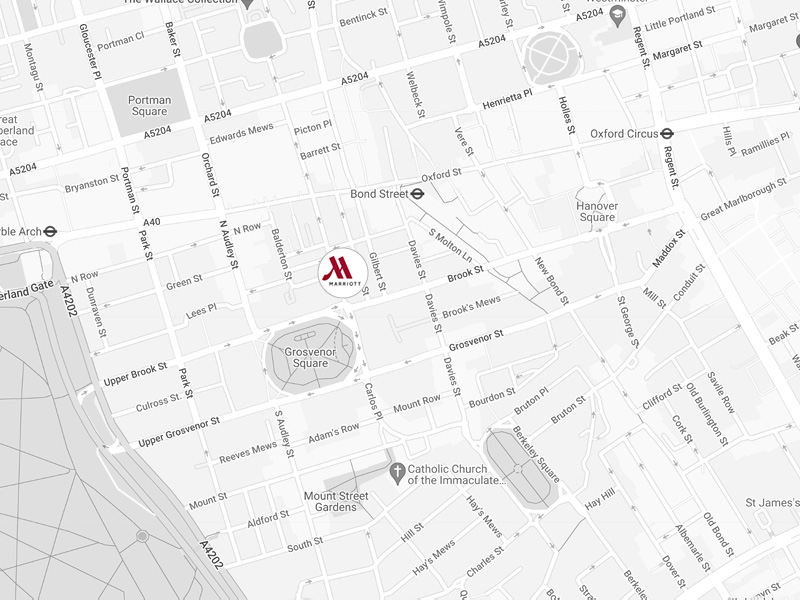
Essential KPIs for Customer Service in Retail
Key Performance Indicators (KPIs) for customer service in retail are vital tools for leaders and managers to measure the effectiveness of their customer service teams.
As retail grows ever more competitive, customer service is a critical way for brands to differentiate themselves. Don’t forget that being a great manager means surrounding yourself with talent but also taking the time to manage and stop poor performance, which is probably the most public-facing aspect of your business; not doing so can break it all.
Delivering excellent customer service is not just a matter of being well-mannered and attentive; delivering excellent customer service requires ongoing monitoring for performance enhancement and taking charge in management.
In this blog, we are going to share with you some important KPIs that retailers can use to measure and develop their customer service team. We will dig into why it is essential to follow KPIs and how they directly affect customer experience, loyalty, and the general brand reputation—especially in physical stores. We will also demonstrate how these metrics supply actionable learnings for managers and prove the validity of applications in prestigious industry awards like “Customer Service Team of the Year.”
By the end of this blog, you are going to know how using KPIs can change your customer service strategy and take your business to a level you have never seen before.
Defining KPIs for Customer Service in Retail
At its most basic, your KPIs (Key Performance Indicators) are the success metrics for business objectives. Ultimately, the purpose of KPIs is to be able to see just how well a customer service team is performing in variables like the average resolution time, which is crucial to measure how quickly issues are being resolved or the average transaction value.
These measurements are intended to give managers the information they need to assess performance, address potential frustrations before they become a pattern, and help structure an approach to how customer satisfaction can be enhanced in concert with the business delivering on results.
KPIs are especially important for retail customer service teams. They produce numeric performance indicators, which can tell you how effective teams are in responding to customer requirements and thus dealing with the issues. Managers can also use those KPIs to identify top-performing employees and even reward them, helping to promote a culture of excellence and engagement.
The Importance of KPIs for Customer Service Teams in Retail
It is essential to track the correct KPIs in order for a retail customer service team to be successful. Fortunately, these are the kinds of metrics that provide a peek into what is working well and what needs improvement so that teams can enhance their performance further.
Clear aims keep your staff true to their end goal and equally motivated. Customer service team members are at their best when they have clear, measurable goals. By defining KPIs and establishing ways to work toward them, companies have a better opportunity to raise the bar for customer loyalty and satisfaction while boosting their bottom line.
For instance, KPIs can offer guidance to allow managers to reflect upon customer satisfaction trends and pain points by monitoring duration and efficacy around issue resolution. The faster you resolve issues, the more customer retention and sales you can expect. Retailers who address and repair customer issues should have better shopper loyalty and higher revenue.
Additionally, monitoring team performance via KPIs such as ‘issues resolved ‘can also go a long way to recognising staff members who have excellent problem-solving skills, allowing for more employee recognition and incentives that will drive overall team morale and performance.
Key KPIs for Customer Service Teams in Retail Stores
The success of any customer service team lies in tracking these KPIs. Store managers and retail leaders can use them to assess team performance and align services with customer expectations.
- Customer Satisfaction Score and Customer Effort Score
- Sales per Square Foot
- Customer Retention Rate
- Foot traffic and digital traffic
- Net Promoter Score
- Conversion Rate
- Average Transaction Value
Customer Satisfaction Score (CSAT) and Customer Effort Score (CES)
The Customer Satisfaction Score will evaluate the level of consumer happiness with the services that they receive, while the Customer Effort Score is going to determine how much effort customers must put into having them find solutions for their issues. This score is typically derived from post-interaction surveys and is in fact what it sounds like—a measure of how well customer service teams meet expectations and how easy interactions feel to consumers, with insights like average handle time (AHT) and wait time indicating how quickly and efficiently customers’ issues have been attended to.
Sales per Square Foot
This number represents how much space the store is using to sell goods and how much money they make from it. This is a significant one for physical retail stores because it helps you to track how much the store earns from that space and how much cashflow that space generates. Especially a shop platform needs it, because through flawless customer service we can ensure that the purchasing process will be good, if not even great, ending in more sales.
Customer Retention Rate (CRR)
Another essential KPI for customer support is Customer Retention Rate (CRR), which indicates how effectively the team holds on to customers over time. This is measured by adding the percentage of repeat buyers. A high CRR indicates a loyal customer base, which is usually the outcome of exceptional service and happiness for the clientele.
Foot traffic and digital traffic
Measuring foot traffic in stores and digital traffic online is a great way to determine customer engagement. It’s a pretty good tell if foot traffic is down, but digital traffic is up. This generally means that customers might have been disappointed with in-store experiences and are shifting their purchase preferences over to online shopping. By tracking this KPI, you can shed some light on how to balance your retail presence in the physical and digital world and make changes for better customer service in both channels.
Net Promoter Score (NPS)
NPS is one of the most common KPIs that you track to assess how many customers are likely to recommend your brand. It’s calculated by asking a simple question in the survey: “How likely are you to recommend this store to a friend or a family member?” Also, observing the volume of support tickets and ticket resolutions can identify areas for optimisation in terms of customer service. A subpar NPS, matched with a glut of agreeable grievances remaining in the support pipeline, is a sign service improvements are desperately needed.
Conversion Rate (CR)
Conversion rate tells us how many of the store visitors convert into actual paying customers. Customer service teams might consider a low conversion rate to mean they are not helping customers well enough with making decisions. When customer service interactions are better, the percentage of visitors who make a purchase increases, directly translating into higher sales numbers.
Average Transaction Value (ATV)
This measures the average amount of money spent per transaction. This KPI gives an insight into how effectively customer service teams are upselling or cross-selling products. A lesser ATV might indicate a need for more customer care team improvement to sell further items or solutions efficiently.
Customer Service Team KPIs: How to Use Them Effectively
The retail customer service KPIs are valuable when approached strategically. All KPI metrics are important since they relate to customer satisfaction and look at how effective the team is when handling problems on the first try.
These are the steps that you can take for maximum benefits:
- Communicate KPIs to Your Team: Determine the most important KPIs to measure and communicate them as priorities. Ensure that every member of the team is aware of how they are being measured. When KPIs are communicated clearly, transparency is created, and this helps staff to solely focus on objectives, ultimately improving both personal and team performance. Defining clear KPIs is also important to help keep your employees engaged and motivated by knowing the direction they should be heading in.
- Provide Training and Development: Continuous training and development equip customer service teams with a better understanding of KPI targets. Customer service reps require ongoing training and reminders. This must be done if high performances are to be retained in communication skills and product knowledge or problem-solving techniques. This knowledge base will not only lead to better customer service but also an increase in confidence and morale among your employees.
- Collect and Analyse Customer Data: Getting the right kind of customer data is necessary in the use of KPIs. This necessitates an ongoing analysis of customer feedback from different channels, social media, sales data, and other performance indices to detect patterns or trends. Social media in particular is a wealth of real-time customer sentiment and key trends that can inform customer strategy. Managers can use this comprehensive knowledge to make informed decisions and to alter course quickly if in any particular area the service delivery falters, thus improving customer satisfaction levels.
- Track, Monitor, and Adjust KPIs: Regular monitoring of KPIs enables managers to catch problems early and realise where room for improvement is. This is useful for providing actionable feedback to teams where such feedback can be linked to the team performance targets. It also supports managers in celebrating successes and recognising high-performing retail employees, which also bolsters team morale.
The role of team players in achieving customer service success in retail
Successful customer service comes from great teamwork in retail. When a support team works together as a team, they are more likely to achieve and exceed their KPIs. When members of a team work together, they are able to benefit from their colleagues experience and lend assistance when the situation is dire.
Driving teams to reach KPIs is heavily dependent on a good culture of retail employee recognition within the company. Celebrating the wins of one or a team is not only great for boosting morale but also a way to help continuously high-performing employees stay engaged in their work. It also improves team cohesion and performance by implementing a recognition culture as part of the organisation where people are incentivised to hit a joint KPI. Employee rewards, including retail awards, such as the People in Retail Awards, ultimately motivate teams by providing public recognition of their achievements. Because employee recognition contributes to happiness at work.
KPIs also help managers and HR staff identify the top performers in their customer service team. Companies can use these metrics to demonstrate the accomplishments of their brightest stars and show substantial proof that their talent level is worthy of being awarded winners teams.
Final Thoughts
Retailers can measure their customer service performance thanks to KPIs, which are essential to successful retail. They can be used to gauge customer satisfaction, output, and performance, as well as the overall business gain.
A culture based on collaboration, awareness, respect for others, and ongoing reflection must be implemented in order to sustain the environment and allow customer service teams to continue to succeed by adapting their services according to differing customer expectations.
Not only do key performance indicators work to monitor performance, they also are ways for you to see your employees hard work and success reflected in a number. After all, if your store is tracking key performance indicators and adjusting as needed, you could be up for one of the awards that recognise outstanding customer service.
Track essential customer service KPIs to drive performance, measure, and celebrate your team’s contributions. REQUEST A FREE ENTRY PACK for the Customer Service Team of the Year award today!
